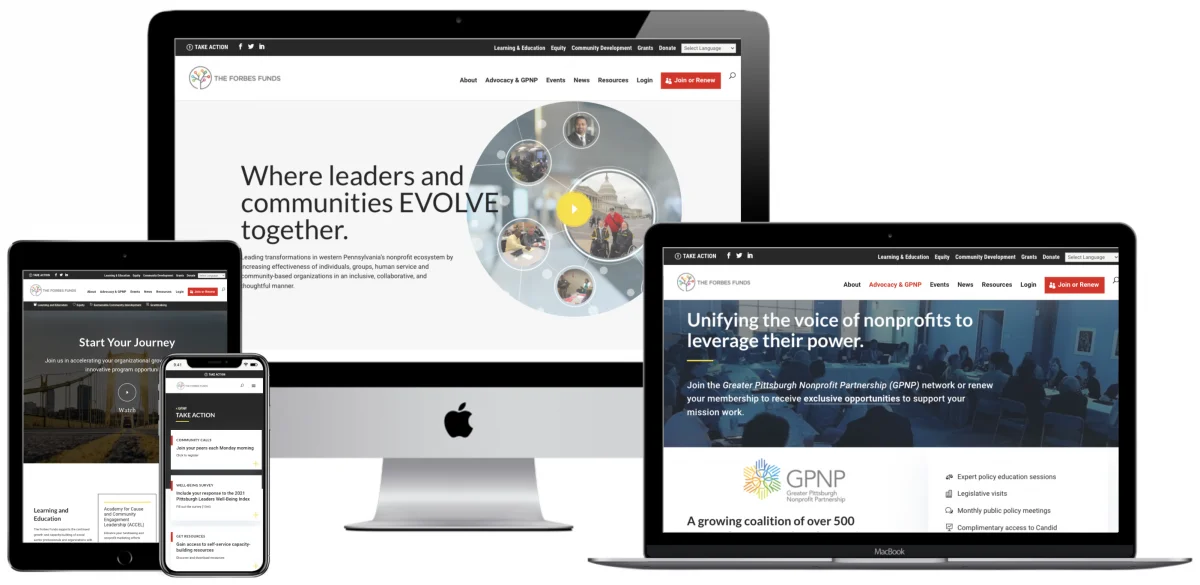Often overlooked, a website’s information architecture is its foundation. The user visits a website with a specific task or goal in mind, which can be as simple as finding a company’s address or phone number.
If the information experience makes the user work really hard for what they’re looking for, as is often the case with poorly-designed websites and information experiences, then the user will simply go back to Google and search for a competitor. When there is great information architecture, this is not the case.
Crafting a website’s information architecture typically begins with research in order to best understand what the users will be looking for, what their intent is, where they are coming from, and so on. Then, an information architecture in the form of a sitemap design is created in order to fully understand how the website can best serve the user towards the completion of their goal.
However, all too often in our experience of redesigning dozens of websites— ten of which received multiple international awards in the past year alone for Mobile Information Experience, User Experience, and Creativity in Website Redesigns. We have encountered and fixed work for clients from sub-par agencies and DIY marketing/communications/design professionals, who tend to err towards their lower-level selves by jumping into creating archaic design before laying a solid foundation. That solid foundation I mention includes a seamless information architecture, which can be outlined via a sitemap, and a cohesive visual design system. A sitemap is an underlying foundation, or structure, of your website. You can find the top four sitemap structures we suggest here.
This is imperative because a website’s sitemap is a decisive factor for SEO, as well as for user experience (UX), in that it logically organizes content and makes it as easy as possible to access when a user is looking for something specific. In tandem with a sitemap design following proper best practices, an inventory of all content should be taken, in order to determine what to keep, what to repurpose or rewrite, and what to throw away in its entirety if it is no longer relevant.
All too often, we’ve found this process to be ignored, thus ignoring user-centered design principles such as mobile-first. After all, as Google says— focus on the user and all else will follow.
The Ins and Outs of Information Architecture
Thus, it is an essential tactic that when designing a website, you place a large focus on ensuring that it has great information architecture. It’s pretty obvious when you visit a website that doesn’t have it; you keep clicking and searching and yet you cannot find what you’re looking for.
The last thing that you want to do with your website is to cause your visitors to leave and look elsewhere. In fact, the user-friendly aspect of a website actually aids in your SEO ranking. So, when you have great information architecture, not only are you keeping your visitors on your website, gaining new leads, and potentially conversions, but you’re also helping your search engine ranking, which will help you gain visibility and increase the visitors that find you in the first place. Basically, it’s a win-win.
Information architecture is essentially a pathway or a map that helps guide visitors through your website. Technically, it is systematically building content in order to classify it logically and seamlessly, so that users can simply find their way through everything your website has to offer.
A simple way to think of information architecture is to think about a road map. On a road map, a driver would find their destination and then map out the most logical route to get there, including any stops that they want to take along the way. With great information architecture, the user is able to head to a website with a designation in mind, and will easily see the best way to get there, as well as to any stops (extra information they want to learn) they want to make along the way.
Crafting the best information architecture
When setting out to build the information architecture of a website, you will want to do a number of things and focus on specific areas in order to design it as user-friendly as possible.
- Learn about your target customer
The first thing that you will need to do before you begin actually building the information architecture of your website, is to research and learn about your target customer. In order to create a map specifically for them, you need to understand their wants and their needs. You simply can’t draw them a map to their destination if you don’t know where they want to go.
Study data from customer and stakeholder interviews. Survey your target market to learn things specific information such as what their problem is, why they are on the website, what result they’re looking for, and more. Find the information that you need and really get a look into what your customer wants. You need to understand your target market in order to meet their needs, so use as many methods as possible to get the information that you need.
- Build customer personas
As you research, you will be able to build customer personas that will help you understand the motivations of your target market. Each persona will have a different motivation and story; for example, the persona of “goals” will be visiting your website because they have a goal in mind. That person might go to your website in order to search for a specific service. Map out the different scenarios for that persona.
Mapping out each persona’s unique scenarios helps you to really see the different pathways visitors could take on your website. When you know all of the pathways, you’ll be able to design a flow on your website that will help deliver the experience these people will be looking for.
- Determine your pages
Once you understand the different steps your visitors are going to need to take, you will be able to determine the different pages your website will need. When you’re creating pages, you want to make sure that every page will help your visitors do something they need to do and will be a seamless stop on the way towards their destination.
Remember, they don’t need to go 10 miles out of the way for gas when there’s a gas station right off the highway. Every page needs to make sense and play a role in your visitor’s experience.
- Use text as necessary
If your website requires a task that is not completely obvious, make sure and include simple instructional text. You don’t want your text to be intrusive or to interfere with the experience, so just add a small amount of text where necessary, trying not to interrupt the flow of the page.
- Create user flow
You will create user flows to ensure that your pages work cohesively and provide a simple and clear experience for your visitors. Check the flow for each of these common areas:
1. Exploring
These visitors come to your website because they have an idea of what they’re looking for, but they’re not entirely sure. They hope that visiting your site and looking around will help. You’ll want to make sure that your navigation page is clear and has a number of relevant links.
2. Knows
These visitors know exactly what they’re doing. They come to your website to search for one thing and that’s what they do. You’ll need to make sure you have clear navigation and that your search works well. For example, a user may search for “Facebook” in Google with a navigational intent.
3. Don’t Know
These people head over to your website to search for something but they end up looking around and often finding something else. You will want to make sure your pages all offer links to more information and that there is a seamless flow from one page to the next.
4. Returning
Returning visitors have been there before and they’re back, either for the same thing or because they believe you may have what they’re looking for now based on their previous experience. You may want to include easy-to-use accounts so that returning customers can get back on easily and find just what they’re looking for, as well as retrieve any previous browsing history or favorites.
The basis of creating a user-friendly website is to make sure that your website is relevant and flows simply from one thing to the next with clear calls-to-action, hierarchy, and solid information experience. If you can provide that experience for your visitors, it won’t be hard to keep them around.
Do you find yourself in need of some assistance with crafting a world-class user experience? Get in touch here to schedule a quick call!
References:
- https://www.altexsoft.com/blog/uxdesign/how-to-create-information-architecture-for-web-design/
- https://neilpatel.com/blog/create-optimal-user-experiences-improving-websites-information-architecture/
- https://cxl.com/blog/website-information-architecture-optimal-user-experience/

Ali Jaffar has been building dazzling websites and creating amazing online experiences for over a decade. His mastery of the latest innovations in web development results in world-class website experiences set apart by show-stopping style and seamless functionality. A sought-after consultant and 50-time award-winning storyteller, UX expert, and web developer — Ali lends his talents to build and bolster digital experiences for a wide array of clients — with a keen focus on web design for nonprofit organizations, B2B, and government agencies. When Ali’s not helping his clients grow, you can find him cooking, exploring new places with his dog, or experimenting with AI & new gadgets.
Connect with Ali on LinkedIn to continue the conversation.

